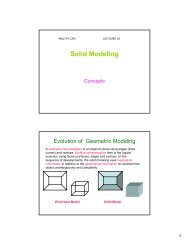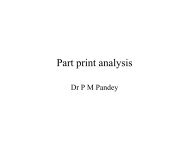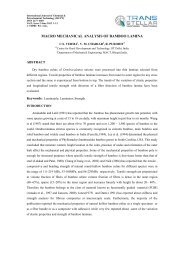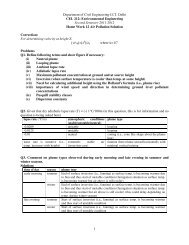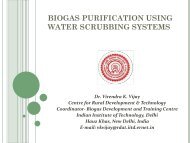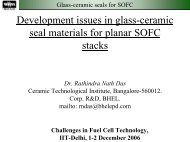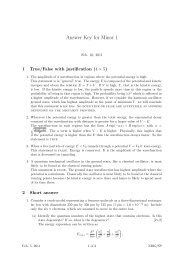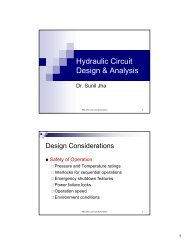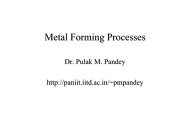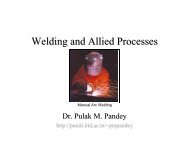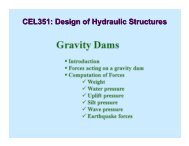Automotive spark-ignited direct-injection gasoline engines
Automotive spark-ignited direct-injection gasoline engines
Automotive spark-ignited direct-injection gasoline engines
Create successful ePaper yourself
Turn your PDF publications into a flip-book with our unique Google optimized e-Paper software.
F. Zhao et al. / Progress in Energy and Combustion Science 25 (1999) 437–562 443<br />
running conditions. Takagi [23] reported that the cold-start<br />
UBHC emissions obtained with the Nissan prototype GDI<br />
engine are approximately 30% lower than that of an optimized<br />
PFI engine under comparable conditions. Another<br />
potential advantage of the GDI engine is the option of<br />
using fuel cutoff on deceleration. If implemented successfully,<br />
fuel cutoff can provide additional incremental improvements<br />
in both fuel economy and engine-out UBHC emission<br />
levels. For the PFI engine, which operates from an established<br />
film of fuel in the intake port, the cutoff of fuel during<br />
vehicle deceleration is not a viable option, as it causes a<br />
reduction or elimination of the liquid fuel film in the port.<br />
This generates very lean mixtures in the combustion chamber<br />
for a few cycles following the restoration of the load,<br />
generally resulting in an engine misfire.<br />
It should be noted that design engineers, managers and<br />
researchers who must evaluate and prioritize the published<br />
information on the advantages of GDI <strong>engines</strong> over PFI<br />
<strong>engines</strong> should be aware of one area of data comparison<br />
and reporting that is disconcerting. In many papers the<br />
GDI performance is compared to PFI baselines that are<br />
not well defined, thus making it very difficult for the reader<br />
to make a <strong>direct</strong> engineering comparison between GDI and<br />
PFI performance. One extreme example is the comparison<br />
of GDI and PFI fuel economy data that was obtained using<br />
two different vehicles with two different inertial weights. An<br />
example of a more subtle difference is the evaluation of the<br />
BSFC reduction resulting from the complete elimination of<br />
throttling in a GDI engine, but not noting or subtracting the<br />
parasitic loss of a vacuum pump that would have to be added<br />
for braking and other functions. A number of published<br />
comparisons lie between these two extremes. The readers<br />
are cautioned to review all claims of comparative GDI/PFI<br />
data carefully as to the precise test conditions for each, and<br />
the degree to which the systems were tested under different<br />
conditions or constraints.<br />
PFI <strong>engines</strong> do have some limited advantages over GDI<br />
<strong>engines</strong> due to the fact that the intake system acts as a prevaporizing<br />
chamber. When fuel is injected <strong>direct</strong>ly into the<br />
engine cylinder, the time available for mixture preparation is<br />
reduced significantly. As a result, the atomization of the fuel<br />
spray must be fine enough to permit fuel evaporation in the<br />
limited time available between <strong>injection</strong> and ignition. Fuel<br />
droplets that are not evaporated are very likely to participate<br />
in diffusion burning, or to exit the engine as UBHC emissions.<br />
Also, <strong>direct</strong>ly injecting fuel into the engine cylinder can result<br />
in unintended fuel impingement on the piston or the cylinder<br />
wall. These factors, if present in the design, can contribute to<br />
levels of UBHC and/or particulate emissions, and to cylinder<br />
bore wear that can easily exceed that of an optimized PFI<br />
engine. Some other advantages of PFI <strong>engines</strong> such as lowpressure<br />
fuel system hardware, higher power density at part<br />
load and the feasibility of using three-way catalysis and higher<br />
exhaust temperatures for improved catalyst efficiency<br />
present an evolving challenge to the GDI engine.<br />
Although the GDI engine provides important potential<br />
advantages, it does have a number of inherent problems<br />
that are similar to those of the early DISC <strong>engines</strong>. The<br />
replacement of the PFI engine by the GDI engine as the<br />
primary production automotive powerplant is constrained<br />
by the following areas of concern:<br />
• difficulty in controlling the stratified charge combustion<br />
over the required operating range;<br />
• complexity of the control and <strong>injection</strong> technologies<br />
required for seamless load changes;<br />
• relatively high rate of formation of injector deposits and/<br />
or ignition fouling;<br />
• relatively high light-load UBHC emissions;<br />
• relatively high high-load NOx emissions;<br />
• high local NOx production under part-load, stratifiedcharge<br />
operation;<br />
• soot formation for high-load operation;<br />
• increased particulate emissions;<br />
• three-way catalysis cannot be utilized to full advantage;<br />
• increased fuel system component wear due to the combination<br />
of high-pressure and low fuel lubricity;<br />
• increased rates of cylinder bore wear;<br />
• increased electrical power and voltage requirements of<br />
the injectors and drivers;<br />
• elevated fuel system pressure and fuel pump parasitic loss.<br />
The above concerns must be addressed and alleviated in<br />
any specific design if the GDI engine is to supplant the<br />
current PFI engine. If future emission regulations such as<br />
the ultra-low-emission-vehicle (ULEV), the super ultralow-emission-vehicle<br />
(SULEV), and corporate average<br />
fuel economy (CAFE) requirements can be achieved using<br />
PFI <strong>engines</strong> without the requirement of complex new hardware,<br />
the market penetration rate for GDI <strong>engines</strong> will be<br />
reduced, as there will most assuredly be a GDI requirement<br />
for sophisticated fuel <strong>injection</strong> hardware, a high-pressure<br />
fuel pump and a more complex engine control system. An<br />
important constraint on GDI engine designs has been relatively<br />
high UBHC and NOx emissions, and the fact that<br />
three-way catalysts could not be effectively utilized. Operating<br />
the engine under overall lean conditions does reduce<br />
the engine-out NOx emissions, but this generally cannot<br />
achieve the minimum 90% reduction level that can be<br />
attained using a three-way catalyst. Much work is underway<br />
worldwide to develop lean-NOx catalysts, but at this time the<br />
attainable conversion efficiency is still much less than that of<br />
three-way catalysts. The excessive UBHC emissions at<br />
light-load also represent a significant research problem to<br />
be solved. In spite of these concerns and difficulties, the GDI<br />
engine offers an expanded new horizon for future applications<br />
as compared to the well-developed PFI engine.<br />
In summary, the potential advantages of the GDI concept<br />
are too significant to receive other than priority status. The<br />
concept offers many opportunities for achieving significant<br />
improvements in engine fuel consumption, while simultaneously<br />
realizing large reductions in engine-out UBHC



